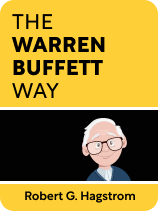

This article is an excerpt from the Shortform book guide to "The Warren Buffett Way" by Robert G. Hagstrom. Shortform has the world's best summaries and analyses of books you should be reading.
Like this article? Sign up for a free trial here.
How does Warren Buffett choose his investments? What does he look for in a business model?
Investment professional Robert G. Hagstrom lays out Warren Buffett’s investment strategies in his book The Warren Buffett Way. One of the steps in Buffett’s process is to evaluate a company’s business model. He looks for three things: simplicity, predictability, and a competitive edge that will last.
Read more to learn how to analyze a business model like Warren Buffett does.
How to Analyze a Business Model
If you want to be a serious investor, you need to know how to analyze a business model. This is one of the ways that Warren Buffett identifies companies with potential. In particular, Hagstrom relates that Buffett prefers to invest in companies that are simple, predictable, and have a long-term competitive advantage because he can be confident those companies will succeed in the future.
Metric #1: Simplicity
First, Hagstrom explains Buffett’s notion that you should only invest in companies with easily understandable business models. He argues that by investing in simpler companies, you’re more capable of making savvy investment decisions because you’re better poised to understand developments in the company. After all, if you invest in a company far outside your area of expertise, it’ll be difficult to assess any news that’s relevant to the company’s underlying business.
(Shortform note: Though Buffett’s investment advice is geared toward publicly traded stocks, it can apply to other investment decisions as well. For example, other experts argue that preferring simple, understandable investments is a good reason to avoid cryptocurrencies. Cryptocurrencies, they argue, are rife with uncertainty and confusion, making them difficult to understand for all but a select few investors. Consequently, they contend that most investors should steer clear of them.)
Metric #2: Predictability
Additionally, Hagstrom says, you should prefer investing in companies that are predictable and have consistently produced the same product. As Hagstrom relates, Buffett’s reasoning for preferring predictable companies is twofold. First, Buffett thinks that companies that pivot frequently and often change their primary product are more prone to blunders because there’s a learning curve whenever you shift products. And second, Buffett holds that companies that have delivered success in the past with one main product are likely to do so in the future since past success is a good indicator of future success.
| The Possible Downside of Predictability Though Buffett may be correct that consistency is generally desirable for companies, other experts warn that consistency can be dangerous in excess. For example, in Super Thinking: The Big Book of Mental Models, Gabriel Weinberg and Lauren McCann argue that companies must be willing to adapt to ever-changing societal norms and desires. Consequently, they suggest that companies that are too dedicated to their current business model can fail in the face of societal change. To avoid this pitfall, in The Infinite Game, Simon Sinek offers business advice that differs from Buffett’s. Sinek argues that companies should try to anticipate changing preferences so that they can preemptively pivot rather than consistently sticking with one business model. However, it might be possible to reconcile Sinek’s advice with Buffett’s–because Buffett is offering investment advice, he may nonetheless agree that companies should be willing to pivot, even though frequent pivoting isn’t desirable from an investor’s perspective. |
Metric #3: Long-Term Competitive Advantage
In a similar vein, Hagstrom notes that Buffett seeks companies with a long-term competitive advantage as potential investment targets. In short, these competitive advantages are sustainable edges that companies use to remain on top of the competition; for instance, Tesla’s battery supply chain, which is considered superior to competitors’ supply chains, constitutes a competitive advantage. Such companies, Buffett argues, are likely to continue delivering impressive returns to shareholders, making them an attractive investment.
(Shortform note: Elsewhere, Buffett clarifies that a long-term competitive advantage creates a “moat” that shields companies’ profits from potential competitors. Much like a moat protects castles from attackers and thereby stabilizes the castle, he suggests that long-term competitive advantages make companies less susceptible to competition and provide a degree of stability.)
By contrast, Hagstrom points out that Buffett avoids investing in companies that primarily sell commodities, which are products that are largely indistinguishable from one another—like gas, gold, and water. Buffett argues that because these companies struggle to develop any advantage over competitors, they’re less likely to deliver the exceptional returns he’s looking for.
(Shortform note: Although companies that sell commodities generally struggle to differentiate themselves, some have managed to do so with great success. For example, Liquid Death—a company that sells bottles of spring water, sparkling water, and iced tea—has become wildly popular because of its ironic branding and committed customer base.)

———End of Preview———
Like what you just read? Read the rest of the world's best book summary and analysis of Robert G. Hagstrom's "The Warren Buffett Way" at Shortform.
Here's what you'll find in our full The Warren Buffett Way summary:
- How to invest like Warren Buffett and earn above-market returns
- How to assess companies to identify which ones to invest in
- Tips for managing your portfolio and avoiding psychological mistakes






